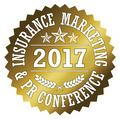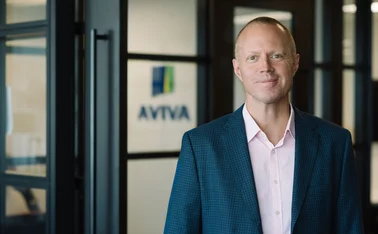
Marketing: Image is everything

Need to know
- Offering extras across different media can be an effective engagement strategy
- Personalising offers and building communities can increase loyalty
- Insurance is lagging behind other industries but start-ups may shake things up
- Consistent brands are reassuring in turbulent times
Insurers must stand out from the competition to attract custom. What lessons can they learn from outside the sector?
After the turbulent year that was 2016, how businesses present themselves to customers has never been more important. Standing out from the competition in a busy market requires companies to use the latest strategies across a range of media to attract custom. For those looking outside the insurance sector for inspiration, there are some key lessons to be learned.
Rather than the traditional tear-jerkers of its flagship Christmas advertising campaigns, retailer John Lewis took a different tack last November. In response to the pervasive atmosphere of doom and gloom in the UK, it sent out an optimistic message, conveyed by trampolining woodland creatures inspiring ‘Buster the Boxer' dog to give it a go. The ad was viewed more than 53 million times on social media channels and shared over a million times in its first week. The retailer said this was a 182% increase on views of 2015's ‘Man on the Moon' advert on social media channels.
Craig Inglis, customer director at John Lewis, said: “2016 has certainly been quite a year, so we hope our advert will make people smile. It really embraces a sense of fun and magic, reminding everyone what it feels like to give the perfect gift at Christmas.”
The campaign was not just limited to advertising. The retailer offered a virtual reality experience at its Oxford Street store, created a bespoke Snapchat lens to transform users into Buster, as well as Twitter stickers to personalise photos with the characters from the adverts.
Back to insurance and offering extras across different media is a strategy being employed by the Hood Group. It provides end-to-end services from websites to pricing, working with insurance companies such as RAC and More Than.
It is currently working on a new app for people taking out travel insurance. Rather than being monetised and a means to buy insurance, it will act as a travel guide for customers, offering them tailored advice on the best attractions and places to eat at certain holiday destinations. It will build communities by allowing users to upload their own recommendations and there will be incentives through special offers.
Gavin Dobson, head of marketing and e-commerce at Hood Group, says: “What we don’t want to do is get the whole thing off Lonely Planet. We want to tailor it to the customers. We want to get them uploading content. It will be personalised for them as they can like the places they want to go to. If they go to a certain restaurant, we can give them a special deal.”
By using this technique, the Hood Group hopes to build a community around its customers, encouraging loyalty and trust of its brand. This was a strategy successfully employed by Sport England in 2015 around its ‘This Girl Can' campaign. This campaign, encouraging women to do sport, is driven by a website that details inspirational stories from women getting involved in sport. Crucially, however, it also allows users to record their own achievements, intellectually investing in the site so they will return again and again.
Sport England's Active People survey, published in December 2016, found that 7.21 million women now play sport and do regular physical activity, 250,000 more than when Sport England launched the campaign. It means the gender gap, which once stood at over two million, has narrowed to 1.55 million.
Sport England CEO Jennie Price notes: "Our ‘This Girl Can' campaign set out to tackle the gender gap. So to reduce it significantly in just two years shows we are making a difference."
Cosmetics firm L’Oréal used a similar strategy – albeit with a more glamourous angle – with its #WorthAsking campaign. This followed The Representation Project’s #AskHerMore campaign, launched in late 2014, which encouraged the public to highlight sexist reporting of female celebrities at high-profile events such as the Golden Globes, particularly when actresses were questioned about their outfits rather than about their work, unlike their male counterparts.
Using its A-list spokeswomen, including actresses Julianne Moore and Eva Longoria and model Karlie Kloss at 2016’s Golden Globes, the L’Oréal campaign encouraged the public to post their favourite quotes from celebrities, the best of which would be highlighted on the brand’s social media platforms.
Marketing strategies: latest thinking
Elliot Lane, joint managing director at communications consultancy FWD, explains how world events affect the latest thinking on marketing strategies.
“If image is everything, then 2016 taught us that perception is everything too. Both the Brexit campaign and Donald Trump’s success in the US presidential campaign showed that the perceived ‘honest’ and down-to-earth rhetoric against the establishment’s continual spin was a winning formula.
“Post-truth became this year’s top word in the Oxford dictionary and its definition is ‘circumstances in which objective facts are less influential in shaping public opinion than appeals to emotion and personal belief’. Which some could argue is the essence of good marketing.
“However the phenomenon of post-truth and the ‘echo chamber’ effect across social media channels have tarnished the online media’s image, and both businesses and consumers in 2017 might want to reaffirm the facts through established channels. It could be a real chance for the trade press to strengthen their position as the authoritative voice on issues.
“The insurance and financial services cannot be seen to market themselves using these new styles of communication. Effective marketing of security and protection products should be through branding a message of trust and of action. The actual positive frontline claims experience is the best way to sell insurance as a brand.”
Outside the industry
Dobson explains why these campaigns are of interest: “We tend to look outside the insurance sector as much as possible for ideas. Insurance is a few steps behind the rest of the world. I do not think it has changed much for hundreds of years but next year is going to be pivotal.”
He says start-ups coming into the market such as Lemonade will shake things up. "It is making it completely personalised. It is focusing on the customer first. That is the biggest challenge for insurers and marketing is a key part of that."
Personalisation is a key tool when branding and promoting products. Freelance branding consultant Lyndal Kearney was involved in Coca-Cola’s campaign for the Euro 2016 football tournament. The challenge was to differentiate the product in the busy world of sports sponsorship, where a lot of campaigns consist in giving away footballs or kit or end up focusing on the players.
“One of the things Coca-Cola looked at was the idea of bringing people together,” she says. “So it celebrated the positivity of competition, the fact that you can’t have a competition without the people you are competing against, so that creates an environment of togetherness that Coke can be at the heart of. It’s the optimism of rivalry and competition.”
In a more visual sense, an iconographic ball was created. It looked like some sharp shards that, brought together, made a ball. The colours on the ball changed depending on the teams playing each other. And Coca-Cola found a way to print limited edition cans replicating the colours, with local markets able to do their own. “It was created to be quite a flexible campaign that could be quickly changed and personalised by consumers,” Kearney sums up.
Direct Line Group: rebranding to reposition
Mark Evans, marketing director at Direct Line Group, explains how the insurer rebranded to reposition itself in the general insurance market using actor Harvey Keitel to reprise the Pulp Fiction character Winston Wolf.
“For Direct Line, it was a case of re-discovering our edge as a ‘fixer’ brand effectively putting customers’ lives back to where they were before. In truth, this is what general insurance is. However, it had been hiding in plain sight for 20 years as everyone fixated on merely being the cheapest.
“The ‘fixer’ thought became the lightning rod for all of our communications. We have developed a pipeline of market-leading propositions to fix many aspects of market dysfunctionality. Whether it’s getting you an emergency plumber in three hours or getting your damaged car back to you within seven days, we found ways to demonstrate that we are the high-performance insurance brand: ‘Can your insurance do that?’
“This approach then made it easier to figure out what our media strategy should be. Our emergency plumber proposition gave us the opportunity to dramatise the movement of water meaning that we invested heavily in media platforms that brought this to life, such as big outdoor tube escalators.
“Whereas our telematics proposition targeting young drivers needed to be about changing the perceptions of safe driving, so we worked with vlogger Alfie Deyes to do a series of videos charting his journey towards passing his driving test and becoming more experienced and competent, obliquely coaching our target market to also be better drivers through our proposition.”
Turbulent times
David Radford, chief marketing officer at Allianz, agrees companies need to focus on what their brand stands for and means to their customers. In turbulent times, whether politically or economically, brands that prove consistent are a source of stability – particularly in the financial services market and even more so across digital channels.
The insurer is trying to engage a more diverse talent and customer audience by partnering with Paralympics GB and Channel 4. The ‘Dare to Believe' campaign, made up of a series of intimate portraits of seven British Paralympians competing in Rio, focused on the moment that changed their lives. Radford says Allianz chose this project because it reflects its core value of ‘enabling people to move on and up in life and business'.
“Consumers and businesses need to know where they stand with the brands they buy and partner with. Being dependable, stable and consistent may not be exciting, but in insurance it’s important.
“Such consistency of brand strategy is important across channels and product lines. Arguably, the more breadth and complexity, the greater the need for brand clarity and consistency.
“A brand’s image has to reflect the experience; the promise has to be delivered, consistently. In our case, having professionally qualified experts available to customers, from a financially robust insurer that acts in customers’ long-term best interests is key to our brand image. Allianz’s brand image is all about precision in a general insurance market.”
Peter Markey, brand communications and marketing director at Aviva, agrees consumers need to feel a stronger and more meaningful connection to brands, and different media channels allow the opportunity to do this. Social content provides a tangible and effective one-to-one way to connect with customers and drive enriched engagement.
“Insurers have much to learn from the great campaigns of 2016,” he says. “Brilliant campaigns start with brilliant content that really connects with consumers, and we have seen this, particularly from the retail sector and the likes of John Lewis and grocery chain Lidl, where warmth and emotion and real human stories are used to provide a powerful and consuming narrative that taps into customer feeling. Utilities firm British Gas and connected heating innovation Hive have also led the way with the adoption and promotion of the connected home. There is much that can be learned here, both in terms of product innovation and the need to foster a more emotional response from the customer, to develop a connection with an organisation's products and services.
“We’ve been pioneering a more disruptive approach in our communications with a particular focus on social and content, where we now spend over 50% of our brand budget, compared to 20% a year ago. We’re working closely with all the key social platforms and media owners both directly and through our agencies to ensure we stay at the forefront for innovation.
“That’s why we now have the highest share of voice through social and content of any insurer in the UK and we’ll build on this again for 2017.”
New campaigns are due to emerge in the insurance sector but consumers will decide if insurers are able to strike a balance between innovating to engage their customers and maintaining a reassuring image.
Insurance Marketing and PR Conference
 Developed with the help of our dedicated advisory board, IMPRC’s sole purpose is to support the people who keep their businesses and brands firmly connected to the markets they serve. Promoting excellence in insurance marketing, communications and PR, and showcasing new trends and technologies to stay ahead, the event is one not to be missed!
Developed with the help of our dedicated advisory board, IMPRC’s sole purpose is to support the people who keep their businesses and brands firmly connected to the markets they serve. Promoting excellence in insurance marketing, communications and PR, and showcasing new trends and technologies to stay ahead, the event is one not to be missed!
The Insurance Marketing and PR Conference & Awards will take place on Friday 9 June 2017 at etc.venues, located at 155 Bishopsgate, London.
For more information on the event, please visit: www.insurancemarketingawardsconf.co.uk
Only users who have a paid subscription or are part of a corporate subscription are able to print or copy content.
To access these options, along with all other subscription benefits, please contact info@postonline.co.uk or view our subscription options here: http://subscriptions.postonline.co.uk/subscribe
You are currently unable to print this content. Please contact info@postonline.co.uk to find out more.
You are currently unable to copy this content. Please contact info@postonline.co.uk to find out more.
Copyright Infopro Digital Limited. All rights reserved.
You may share this content using our article tools. Printing this content is for the sole use of the Authorised User (named subscriber), as outlined in our terms and conditions - https://www.infopro-insight.com/terms-conditions/insight-subscriptions/
If you would like to purchase additional rights please email info@postonline.co.uk
Copyright Infopro Digital Limited. All rights reserved.
You may share this content using our article tools. Copying this content is for the sole use of the Authorised User (named subscriber), as outlined in our terms and conditions - https://www.infopro-insight.com/terms-conditions/insight-subscriptions/
If you would like to purchase additional rights please email info@postonline.co.uk
Most read
- Aviva CEO warns home insurance premiums need to go up
- Integration and restructuring costs push RSA to 2023 loss
- Which urges FCA to take action on premium finance following investigation








